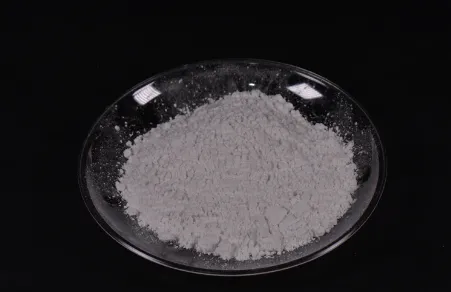The Rise of Synthetic Mica in Cosmetics
The beauty industry has seen an evolution in its ingredients over the years, with synthetic mica emerging as a popular alternative to natural mica. With its unique properties and ability to provide a flawless finish, synthetic mica has garnered attention from both manufacturers and consumers. This article explores the growing popularity of synthetic mica, its comparison with natural mica, and its role in cosmetics, focusing on China synthetic mica powder, the debate of synthetic fluorphlogopite vs mica, and the use of fluorphlogopite in cosmetics.

Synthetic Mica: A Sustainable Solution for Modern Cosmetics
In recent years, the demand for synthetic mica has surged as consumers and manufacturers seek more sustainable, ethical, and reliable alternatives to natural mica. Synthetic mica is manufactured through advanced technology to mimic the shimmering qualities of natural mica, but with fewer environmental and ethical concerns. Unlike natural mica, which is mined in countries like India, where labor conditions and environmental damage are often contentious, synthetic mica provides a cleaner, more controlled production process.
The versatility of synthetic mica makes it a key ingredient in cosmetics, especially in products that require a light-reflecting, glittering effect. From foundations to highlighters and eyeshadows, synthetic mica ensures a smooth and long-lasting application that appeals to a wide range of skin tones. The synthetic version is not only more sustainable but also allows for a higher level of purity and consistency compared to its natural counterpart, making it an essential material in today’s cosmetic formulations.
China Synthetic Mica Powder: A Leader in Mica Production
One of the leading producers of synthetic mica powder is China, which has established itself as a global hub for mica production. China synthetic mica powder has become a staple in the cosmetics industry due to its high quality, affordability, and reliable supply. Manufacturers in China have refined the process of producing synthetic mica powder, ensuring that it meets the stringent standards required for cosmetic use.
China synthetic mica powder is prized for its consistency and purity, as it is produced under strict quality control measures. With the ability to replicate the iridescent shimmer of natural mica, China synthetic mica powder provides an affordable and ethical alternative to mined mica. As more beauty brands focus on transparency and sustainability, the demand for China synthetic mica powder continues to grow, especially as it provides a viable solution to the challenges associated with traditional mica mining.
Synthetic Fluorphlogopite vs Mica: Understanding the Difference
When it comes to synthetic mica, it is important to understand its composition and how it differs from natural mica. One key comparison is synthetic fluorphlogopite vs mica, where fluorphlogopite is often used as a synthetic alternative to traditional mica. Fluorphlogopite, also known as synthetic fluorphlogopite, is a type of mica that is modified in the laboratory to enhance its properties.
While both synthetic mica and fluorphlogopite have similar reflective qualities, fluorphlogopite offers superior heat resistance, chemical stability, and flexibility compared to traditional mica. Fluorphlogopite is particularly valued in high-performance applications, such as cosmetics and electronics, where durability and long-lasting effects are important. However, the debate between synthetic fluorphlogopite vs mica often boils down to personal preference and the intended use of the product, as both have distinct advantages. For cosmetics, the choice between the two depends on the specific needs of the formulation, such as shimmer intensity, longevity, and heat resistance.
Fluorphlogopite in Cosmetics: A Superior Choice for High-Performance Products
Fluorphlogopite in cosmetics has quickly become a sought-after ingredient, especially for luxury and high-end beauty brands. Fluorphlogopite is a synthetic mineral that provides a flawless, reflective shimmer, similar to that of natural mica, but with enhanced stability and performance. This makes it ideal for products that require a long-lasting, radiant finish, such as eyeshadows, highlighters, and blushes.
The main advantage of fluorphlogopite in cosmetics is its superior resistance to heat and UV damage. Unlike natural mica, which can degrade when exposed to sunlight or high temperatures, fluorphlogopite retains its shine and color, ensuring that cosmetics stay vibrant throughout the day. Additionally, fluorphlogopite in cosmetics is known for its smooth texture and ability to blend seamlessly with other ingredients, providing a soft, velvety finish on the skin. With these properties, fluorphlogopite in cosmetics has become a key ingredient for brands seeking both high performance and longevity in their products.
Embracing Synthetic Mica in the Beauty Industry
The rise of synthetic mica in the beauty industry represents a shift towards more sustainable, ethical, and high-performance ingredients. With innovations like China synthetic mica powder and fluorphlogopite in cosmetics, beauty brands are able to create products that meet consumer demands for both quality and sustainability. The ongoing debate between synthetic fluorphlogopite vs mica highlights the need for continued exploration of the best materials for cosmetics, but it is clear that synthetic mica will play an essential role in shaping the future of the industry.
By understanding the differences between synthetic mica, China synthetic mica powder, and fluorphlogopite, consumers and manufacturers can make informed choices about the ingredients in their cosmetics. Whether for ethical, performance, or environmental reasons, the shift towards synthetic mica is a positive change for the beauty industry, offering a range of benefits that align with modern values of sustainability and quality.
-
Transforming Surfaces with Mica-Enhanced Paints in Coatings and DecorationNewsJul.02,2025
-
The Ultimate Guide to Mica-Based Luminous Colors with Pearlescent PigmentNewsJul.02,2025
-
The Critical Role of Mica in Industrial Applications in Welding and Oil FieldsNewsJul.02,2025
-
Revolutionizing Automotive Aesthetics with Modified Plastics Pearlescent PigmentsNewsJul.02,2025
-
The Secret with Mica Powder for Cosmetics Behind Radiant, Natural MakeupNewsJul.02,2025
-
Enhancing Performance in Polymer Applications with Mica Powder for RubberNewsJul.02,2025
Products categories









